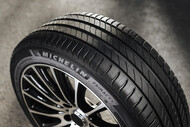
Tips & Advice for Car, SUV & Van tires
A tire is designed to meet performance requirements. But beyond a certain level of wear, it needs to be changed. What is the role of the tread? Up to what level of wear does the tire remain effective? And what is the legal minimum tread depth for changing your tires? Find out the answers to all your questions.
The performance of a tire
The primary functions of a tire are to carry a load and to allow the vehicle to accelerate, brake and turn. But beyond its functions, a tire is chosen for the performance you expect from it, which is relative to your use.
It is the way a tire is designed that will make it perform better under certain conditions than others. And to achieve specific performance, it is the tread that plays a decisive role.
The sculpture's grooves on the tread surface are essential to perform. Depending on their design, they will be more effective in certain conditions, on snow, on dry or wet roads.
The tire's tread depth also plays a role in performance. For example, it is important for water drainage when driving on wet roads. This ensures that the tire maintains contact with the ground and postpones the aquaplaning effect to higher speeds.

What is the tread depth of a new tire ?
This will depend on the tires and the choice of manufacturer, but here is what is important to know: the tread pattern should be thick enough to ensure a long life for the tire.
However, if the tread is too deep, it will also consume too much energy during driving, and therefore fuel, because of the heat released by the rubber when it deforms.
This is why the tire's tread depth is designed by the manufacturer to find the best balance between the life of the tire and the fuel consumption related to tires.
What is the legal tire limit of the tread depth ?
The minimum tread depth is 1.6 mm. This means that it is imperative to change your tires once this limit has been reached to avoid compromising your safety and breaking the law.
But it also means that it is premature to change your tires before this threshold. This paragraph below how to check if the wear level is reached.
At MICHELIN, we design tires with performances made to last. That is, they are able to provide an excellent performance right up to the last kilometre, when the wear threshold is reached. There are two main reasons why MICHELIN optimizes the longevity of its tires : less frequent tire changes save you money and are more environmentally friendly. This is why MICHELIN designs tires that perform well until the minimum tread depth is reached.
Tire tread check
Professionals use a specially designed tool to check the legal tire limit of the tread, known as a tire gauge. If you are not equipped with one, you can easily find out the wear level of your tire thanks to the wear indicators, which are identified on MICHELIN tires by a small Michelin man.
When the tread wear level reaches the wear indicators (which define the legal tire limit), it is time to change your tire.

Find the right tyre
Enter your vehicle or tyre size
We're searching for your tyre...
Wait few seconds we're processing your photo


